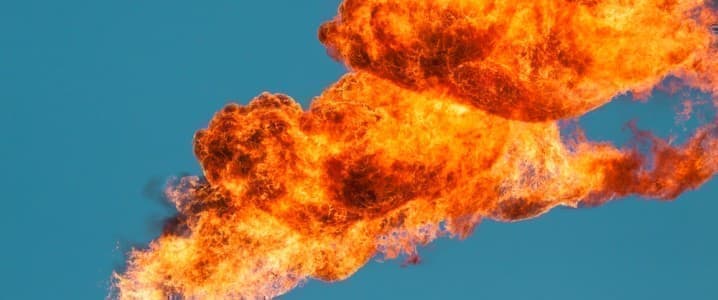The U.S. Environmental Protection Agency (EPA) could introduce new emissions fees for the production of methane in oil and gas projects across the country if approved. This month, the EPA proposed a new rule to encourage clean energy deployment and decarbonisation, as well as to reduce methane emissions, aimed at some of the country’s biggest emitters. Some companies in the oil and gas industry continue to emit higher levels of greenhouse gases than permitted by Congress under the Inflation Reduction Act (IRA). If approved, this rule would charge companies that produce excess emissions. The EPA hopes that the rule will encourage companies to invest in carbon capture and storage technologies, as well as follow best practices to support decarbonisation and the curbing of methane emissions before it comes into place.
The rule reflects the aims of the Biden Administration’s 2022 IRA, the country’s most far-reaching climate policy to date. EPA Administrator Michael Regan stated, “Today’s proposal, when finalised, will support a complementary set of technology standards and historic resources from the Inflation Reduction Act, to incentivise industry innovation and prompt action. We are laser-focused on working collectively with companies, states, and communities to ensure that America leads in deploying technologies and innovations that aid in the development of a clean energy economy.”
Methane continues to leak from drill sites, gas pipelines and other oil and gas equipment largely undetected. It contributes significantly to global warming, as well as being harmful to public health. Methane is thought to be responsible for almost a third of the rise in global temperatures since the Industrial Revolution. The fossil fuel industry is the third-biggest emitter of methane globally after wetlands and agriculture. U.S. methane emissions have dropped significantly in recent decades thanks to innovations such as improved practices in the oil and gas industry and the plugging of thousands of abandoned oil wells. Methane emissions totalled the equivalent of 793 million metric tonnes of carbon dioxide in 2021, meaning it was still the third-largest methane emitter worldwide.
If the EPA’s rule comes into place, the agency would collect excess greenhouse gas fees outlined in the IRA. The climate policy outlined a waste emissions charge for methane from oil and gas facilities that report emissions higher than 25,000 metric tonnes of CO2 equivalent a year via the Greenhouse Gas Reporting Programme. As established by Congress, the fee begins at $900 per metric tonne of excess emissions from 2024, $1,200 from 2025 and $1,500 from 2026 onwards. These fees are only applied to companies that exceed the quantity of emissions established by Congress. The hope is that this will encourage companies to keep emissions below the stipulated waste level to support U.S. climate aims. Until now, several oil and gas companies have found it cheaper to waste methane than to carry out key upgrades to facilities or end the practice of gas flaring.
However, not everyone is happy about the potential introduction of the fine system. The American Petroleum Institute’s Senior Vice President of Policy, Economics and Regulatory Affairs, Dustin Meyer, stated, “As the world looks to U.S. energy producers to provide stability in an increasingly unstable world, this punitive tax increase is a serious misstep that undermines America’s energy advantage. While we support smart federal methane regulation, this proposal creates an incoherent, confusing regulatory regime that will only stifle innovation and undermine our ability to meet rising energy demand. We look forward to working with Congress to repeal the IRA’s misguided new tax on American energy.”
Yet, aims to reduce methane emissions at any cost come from the highest level. In December, at the COP28 climate summit in Dubai, the Biden administration revealed its aim to significantly reduce methane emissions from the country’s oil and gas industry. This supports the previous COP pledge by 150 countries to cut methane emissions by 30 percent from 2020 levels by the end of the decade. Vice President Kamala Harris stated, “Today, we are demonstrating through action how the world can and must meet this crisis.”
The plan includes the banning of routine natural gas flaring from oil wells, as well as the monitoring of leaks using advanced digital technologies. The rules, to be carried out under the EPA, could prevent around 58 billion tonnes of methane from being emitted between 2024 and 2038. The outlined regulations reflect those already put in place at the state level by New Mexico Governor Michelle Lujan Grisham. The Biden administration hopes to develop a blueprint for other countries to follow when it comes to methane reduction. The rollout of new regulations is expected to save the U.S. around $7.6 billion a year in climate and health costs through 2038; it will also help the industry to recover high levels of natural gas, valued at up to $13 billion.
By Felicity Bradstock for Oilprice.com
More Top Reads From Oilprice.com:
- Aluminum Price Forecasts Challenged by Global Market Dynamics
- China Hits 5.2% Growth Target Despite Population Challenges
- Inverse-Perovskites Open New Horizons in Thermoelectric Applications


















